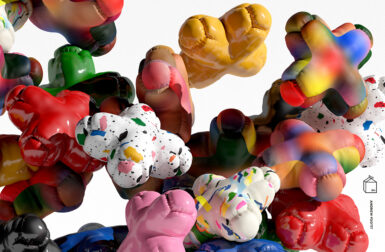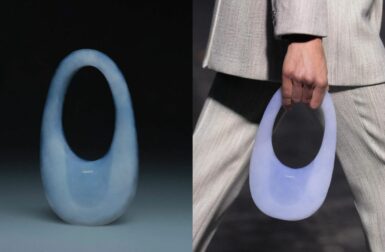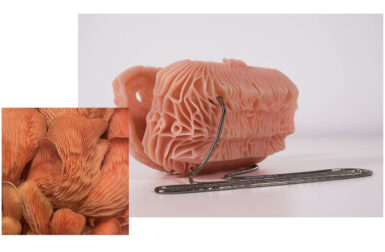Take 5: The NASA Worm, the Atlas of AI, Yinka Ilori’s Pop-Up Shop + More
Twice a month we’re inviting one of the Design Milk team members to share five personal favorites – an opportunity for each of us to reveal the sort of designs we love and appreciate in our own lives from a more personal perspective. Senior Editor Gregory Han joins this week for our Take 5 series.

1. Yinka Ilori Pop-Up Shop
It’s a bummer realizing by the time this post publishes designer Yinka Ilori’s pop-up shop in Shoreditch, East London will have shuttered its kaleidoscopic framed doors with the start of the new year. Stocked with homeware and lifestyle products of his own making, Ilori conceived the pop-up as an ode to small independent businesses and their placemaking within communities the world over – a message delivered with a joyful vibrancy colored by the legacy of West African design. I can only hope this pop-up is first of many.
2. Ray-Ban Meta Smart Glasses
It’s hard to erase the memories associated with the too-soon experimental wearables known as Google Glass from a few years back. The limited capabilities paired with dork-grade styling left a mark akin to the imprint of ill-fitting eyeglasses across my bridge. That’s why I came with very low expectations – if not also a mild level of disdain – for these new Ray-Ban Meta smart glasses. Let me say, these smart glasses are the antithesis of the Google Glass experience. They look good, keep things simple and thus operate with ease, and capture video and stills with surprising clarity. Although I still worry about issues of use in public spaces and privacy, and probably would benefit upgrading to some larger sized Wayfarers – I came to really enjoy being able to record video and snap photos while hiking without reaching for my phone. And once Multimodal AI graduates from beta to a more polished feature, the promise of wearables going mainstream seems closer to becoming the reality we’ve been promised for years.
3. The Atlas of AI by Kate Crawford
As many interests in my life, I came to Kate Crawford’s book circuitously. It began with a viewing of the film After Yang (one I highly recommend for both its narrative and sublime art direction; it’s directed by the same filmmaker behind the architecture-orbiting, Columbus). The film delves into the themes of identity, intelligence, memory, and what exactly makes us human with a quiet introspection often absent when exploring the social ramifications of artificial intelligence. The film was based on a collection of 13 short stories by Alexander Weinstein titled Children of the New World, which I read immediately after being enamored by the film. That in turn eventually delivered me to the Atlas of AI. As someone who believes every great piece of fiction has its foundation in fact, Crawford’s investigation into the history and ramifications of artificial intelligence shines as a lighthouse across a turbulent sea of hyperbole. I haven’t finished the book yet, but that’s partially because I keep going back to reread pages invigorated by its insights.
4. The Legacy of the NASA Worm Logo (Official NASA Broadcast)
David Rager, creative art director at NASA, is both a neighbor and friend, which made it very exciting to see and hear him speak amongst other notable figures, including Pentagram designer, Michael Bierut, and NASA’s entertainment and branding liaison, Bert Ulrich, about the history of one of the most iconic logotypes with its creator, Richard Danne. There are few logos I would want to adorn myself with these days, but that curvilinear 4-letter combination still does it for me as a symbol of science, curiosity, and typographic elegance – an enduring emblem of humanity’s potential.
5. Cambridge Audio EVO CD
Have you heard? Those silver shiny platters of 1s and 0s known as compact discs are making a comeback. Out of curiosity, and spurred by the ample availability of affordable used CDs locally, I recently added a CD transport from British hi-fi specialist Cambridge Audio. Paired with their Evo 75 all-in-one system alongside matching speakers I purchased during the heart of pandemic, it felt both exhilarating and a little weird placing a disc into the transport’s tray and pressing play again after so many years of the medium’s absence. The muscle memory may have atrophied, but the pleasures of sitting down and listening to music with presence and purpose felt revelatory only a few minutes in. It also helps that the EVO CD pairs perfectly – sonically and aesthetically – to Cambridge Audio’s other EVO components, right down to the changeable side panels. I still stream music, but listening to CDs is something akin to the ritual of preparing coffee yourself: slower, requiring your presence, and ultimately resulting in a more gratifying experience.
This post contains affiliate links, so if you make a purchase from an affiliate link, we earn a commission. Thanks for supporting Design Milk!














